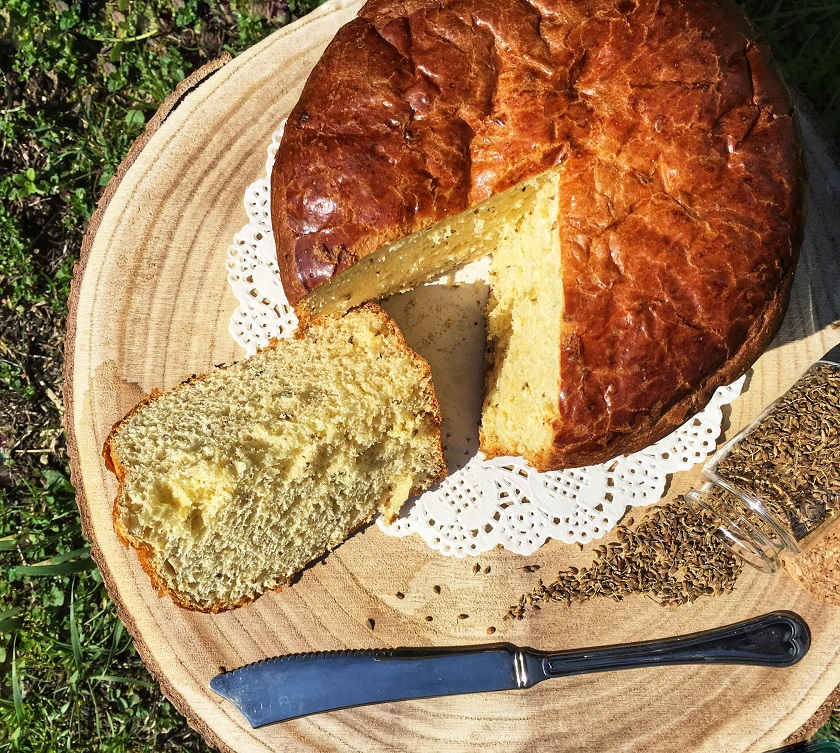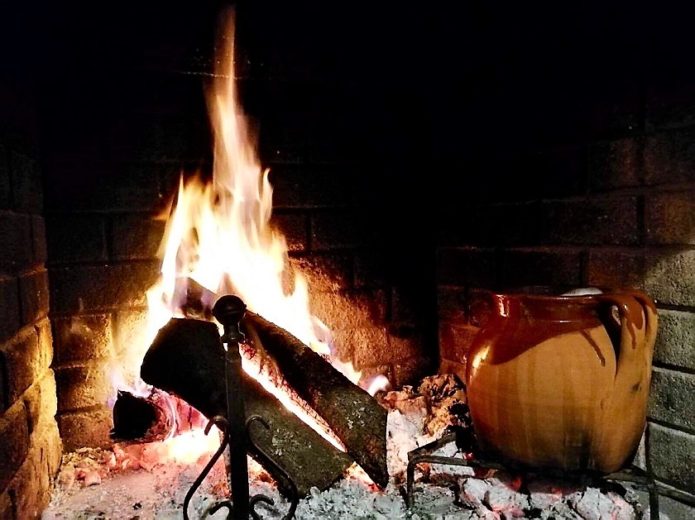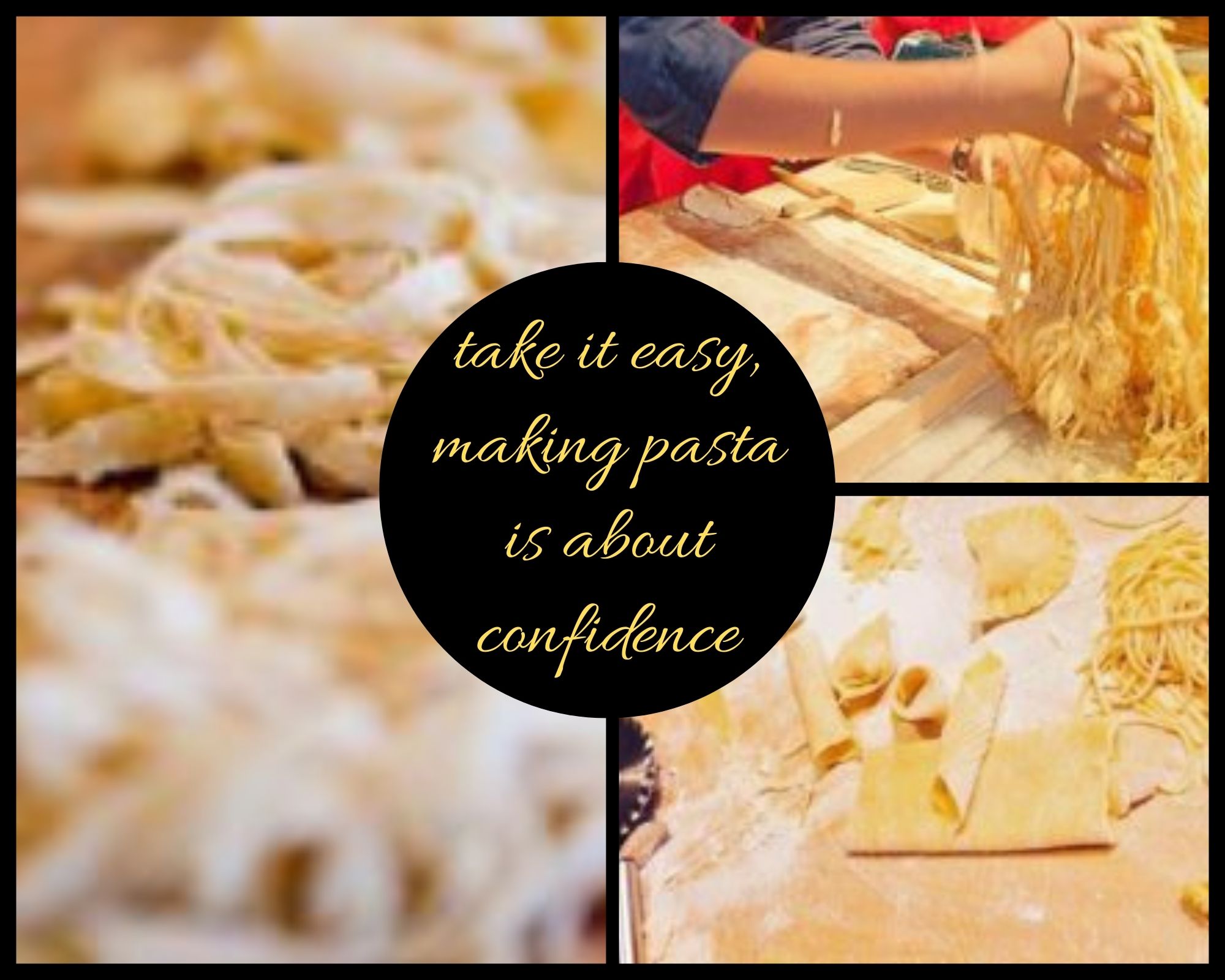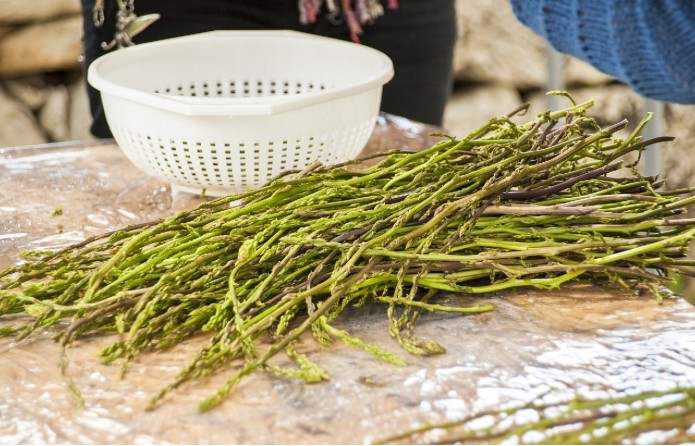In Tuscany, we have a special sweet tradition, called “la Sportellina” or “schiacciata di Pasqua” (literally the Easter squashed bread). It’s quite a funny name for a cake that looks anything but squashed, I know! But actually the name comes from the great amount of eggs that need to be cracked (squashed) into the batter.
The countryside Easter traditions
The season of Lent in the old days, was by precept a time of fasting and repentance, so people would resort to homemade products only. It was a common and very heartfelt religious tradition, especially in the countryside. Most of the peasant families’ meals consisted of soups, polenta, lots of vegetables from their own farm or just some homemade bread and freshly picked herbs. Adding a pilchard in oil every now and then was a real delicacy that not all could afford. So no wonder on Easter, people would indulge on abundant dishes and plenty of meat, generously soaked by a glass or two of good wine!
The food preparations usually began during the Holy Week before Easter, because everything had to be produced in great quantities, to be shared with families and neighbors as a symbol of gratitude and celebration.
As a child, I remember a great buzz around here, of people going up and down the town’s alleys from early morning until sunset. I could tell Easter was coming just by raising the nose and sniffing the air: suddenly I was engulfed with the sweetest smell of aniseed and freshly baked cake, that used to come from the town’s wood-fired oven. Yes, because at that time, there were no household appliances and not everyone could afford to have their own oven. So during the Easter rush, when women used to prepare lots of oven-baked goods, they had to run up and down the main street with their kneaded doughs to reach the town’s oven when their turn came. Imagine that oven working day and night to bake hundreds of pans of traditional delicacies, which they would take back home once baked. Of course the smell that filled the air back then, was astonishing!

The origins of sportellina cake
You see, the connection between ancient traditions and nature is always amazing, because once again nothing is random: at the beginning of the spring season, hens used to lay more eggs than usual, and they had to be consumed pretty fast, since there were no special storing procedures like nowadays. So this Easter cake – like most of this season’s cakes and dishes – was just the perfect way to consume quite a few eggs.
As I said, our mothers and grandmas used to prepare this traditional cake in large quantities, during the Holy Week. It would take a lot of work and patience to make this recipe, due to the rising and baking times, which were very long. Imagine they had to knead and allow the dough to rise, again and again for no less than 5 times, before baking it! That’s another one of the reasons why these cakes were being made in large quantities. Some pieces were then being wrapped and given to the family’s guests and neighbors, others were being offered to the church, to be served on the way out, after the Holy Mass on Easter day, and a few were being left for breakfast in the days after.
In our days, when everything seems so rushed and we’re always in a hurry, it’s hard to think of dealing with such a long and delicate preparation and of course we all know you can easily find it at the supermarket. What you don’t know is the feeling you get when you dip your hands into that dough and start kneading. You take that moment just for yourself, to clear your mind and let your thoughts run free, while the sweet smell of aniseed and mint liqueur fill your nostrils enough to take you back to your childhood days. It doesn’t matter how long it will take, it’ll all be worth it when you see that precious little piece of dough come up and become brown, making you feel proud for once again having kept the tradition alive.
The Sportellina Recipe:
1,5 kg 00 flour
50 gr. brewer’s yeast
150 ml milk
7 eggs (plus 1 to brush the surface)
450 gr. sugar
110 gr. extravirgin olive oil
50 gr. butter
50 gr. mint liqueur
50 gr. maraschino
15 gr. aniseed
1 orange (zest and juice)
First of all dissolve the brewer’s yeast into the warm milk, then gradually add in some flour (about 300-400 grams) and start mixing until well incorporated. Knead it into a ball and put it in a bowl to rest for about 2 hours.
After two hours, mix in 3 eggs, 150 gr of sugar, 40 gr. of olive oil and another 400 grams of flour. Then let it rest again, in a warm place until it doubles the volume (this time will take about three hours).
For the third step, add in 2 eggs, 150 gr of sugar, 40 gr of olive oil, 25 gr of mint liqueur, 25 gr. of maraschino and again 400 gr. of flour. Knead it again until all ingredients are well combined and leave it to rest for another 3 hours.
Finally, mix in the rest of the ingredients and knead it for a while, then give it a final 3 hours rest again.
Divide the batter into 3 equal parts and put them into the baking moulds (we use the same ones as for Panettone). Put the moulds in a warm place covered, and let them rise for 4-5 hours, or until the double their volume.
Brush the top of the cakes with the beaten egg and then bake in a preheated oven at 180° C for about 50 minutes, or until the surface becomes brown. Leave them in the oven to rest for 10 more minutes and then let them cool completely before serving.
You can keep the cakes in a plastic bag, in a cool dry place for up to one week, so you can actually bake more pieces and offer them to family and friends as an Easter gift, or you can just have a wonderful breakfast everyday for a whole week! Enjoy!
















